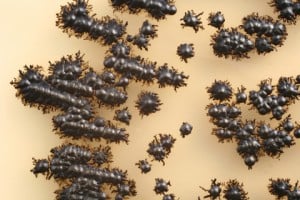Mold on the Rise: 10 Tips to Avoid Trouble in Your Property

According to USA Weekend, there has been a 300% increase in asthma over the past 20 years and with 30% of newly built homes having some form of mold, property owners need to be aware.
Mold removal is easy in small quantities, but can quickly escalate to a size and scope that can result in sickness and require expensive professional remediation to solve.
Before becoming host of the nationally syndicated home improvement radio program The Money Pit, Tom Kraeutler spent 20 years inspecting homes for mold and other maladies. Kraeutler says mold can exist virtually anywhere in the house. Whether you are inside or outside, mold spores are there. Mold spores can enter your home through openings as large as doors or windows, or as small as the tiniest gap. Once in the home, the spores can grow on clothes, shoes, toys or even pets. Worse yet, Kraeutler says, toxic mold is almost certain to release clouds of potentially harmful spores that, once airborne, can take the shortest path to your lungs.
Mold needs three things to grow: moisture, air and food – a combination found just about anywhere in a home. To keep a home mold free, Kraeutler suggests the following:
1. Mind The Moisture ” Keep humidity below 50% in basements. Improve outside grading and drainage by keeping gutters clean and soil always sloping away from the house. Cover dirt crawlspace floors with plastic to reduce moisture.
2. Store Safely ” Keep all storage several inches up off concrete floors and away from foundations where dampness can seep in. This is especially important with organic material like cardboard boxes. For a mold free home, avoid using wooden shelves; metal or plastic shelves are preferable.
3. Heat Finished Basements ” Below grade spaces like finished basements are more likely to become infested and should always be heated to at least 60 degrees, even when not being used. The warmer the space, the less the chance that condensation will form and feed a mold problem.
4. Build Mold Resistant ” Choose building materials that don’t feed mold. For example, Dens Armor Plus, is a wallboard made by Georgia Pacific that is specifically designed to prevent mold growth and would be a good choice for basement walls.
5. Ventilate Vigorously ” Poor or missing ventilation fans in damp spaces like baths and kitchens can leave enough moisture behind to sustain a mold problem. Ensure all baths and kitchens are vented by properly sized fans that take moisture outside and Not into attics. Keep the bathroom door open after bathing to speed drying of surfaces.
6. Avoid Basement Carpets” Carpets can be incredibly effective havens for mold. Even non-organic carpets can collect dirt, dust and moisture that combine to provide mold a fertile ground in which to grow, especially in below-grade spaces where relative humidity tends to be higher. Hard surface products like laminate flooring or engineered hardwoods are always a better choice for basement spaces.
7. Filter The Air ” If your home has a forced-air heating and cooling system, using a top quality air filter is a must. Look for pleated filters with a MERV rating of at least 6-8, or 11 if the family is prone to allergies. Another option is a whole house electronic air cleaner. Mounted permanently to the home’s HVAC system, it uses ionization technology to charge particles making them stick to filters like a magnet.
8. Insulate Ducts ” Duct systems that carry heated or cooled air throughout your house must be insulated whenever they pass through unheated or uncooled spaces like attics or basements. If not, condensation can form inside the ducts and when combined with dust in the air, can allow for mold to grow in the ducts, circulating spores throughout your entire home.
9. Clean Carefully ” Use mold-inhibiting cleaners in bathrooms and kitchens. Portable air conditioning units should be taken apart and cleaned at the start of every season. When painting damp spaces like kitchens and bathrooms, use paint with a mold inhibitor EPA-approved for indoor use.
10. Fix Floods Fast – For a major leak or flood, quick action can stop mold before it starts. Thoroughly dry soaked carpets and padding, and remove any wet upholstery. Then wash and disinfect all surfaces before the carpet and pad are replaced.
Mold may be a part of Mother Nature’s plans, but following these tips will ensure recovering from the mold allergies it can cause, doesn’t -become part of your plans.
Tom Kraeutler is a home improvement broadcast journalist, author, and co-host of the nationally syndicated Money Pit Home Improvement Radio Show.
With AAOA, landlords have resources at their fingertips. Check out our Landlord Forms page.
American Apartment Owners Association offers discounts on products and services for landlords related to your rental housing investment, including rental forms, tenant debt collection, tenant background checks, insurance and financing. Find out more at www.joinaaoa.org.















 Accessibility
Accessibility